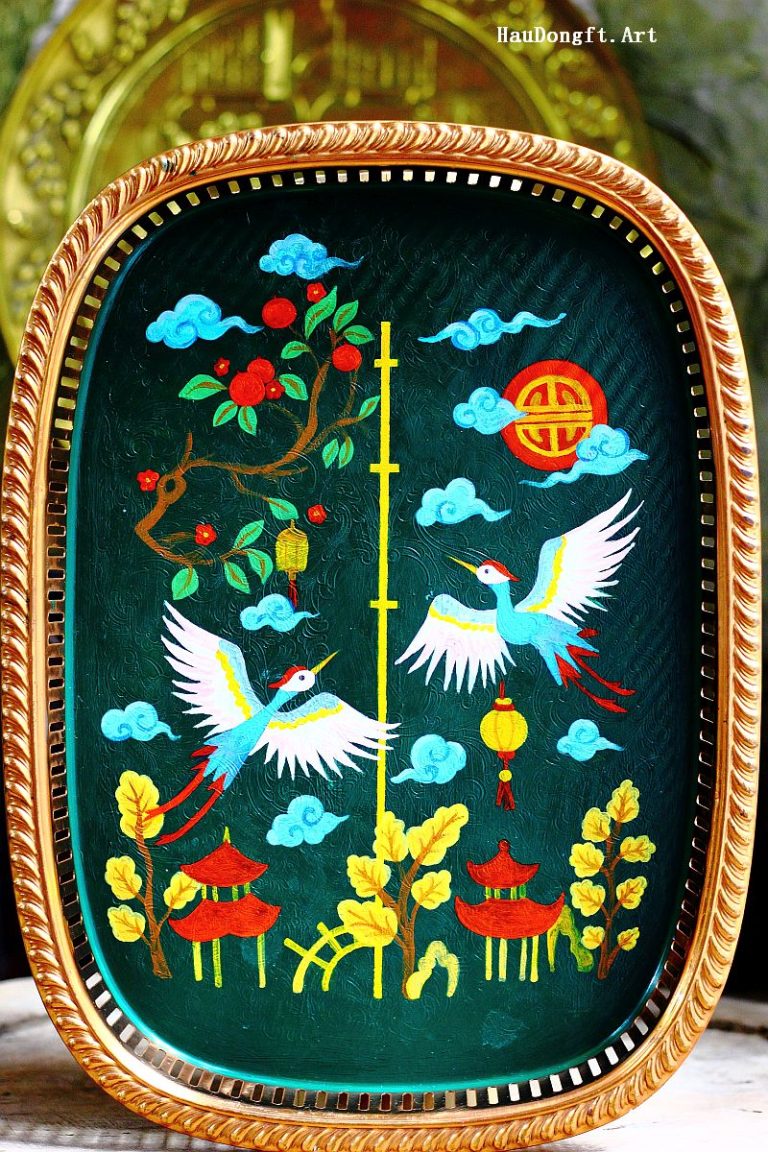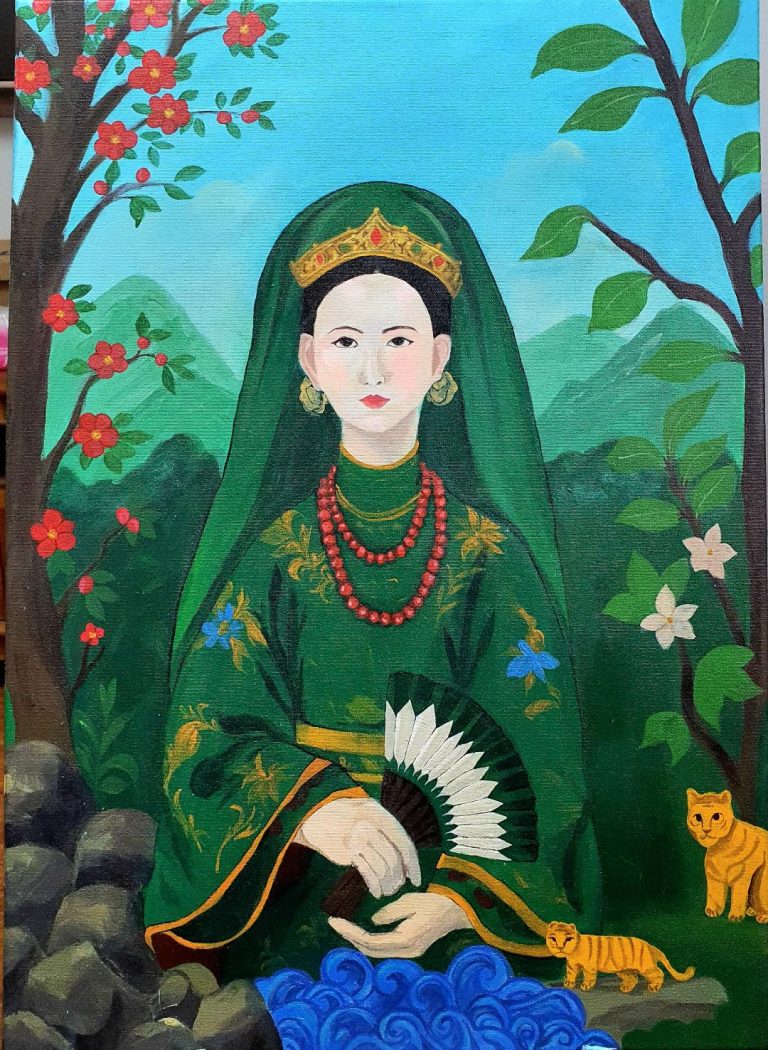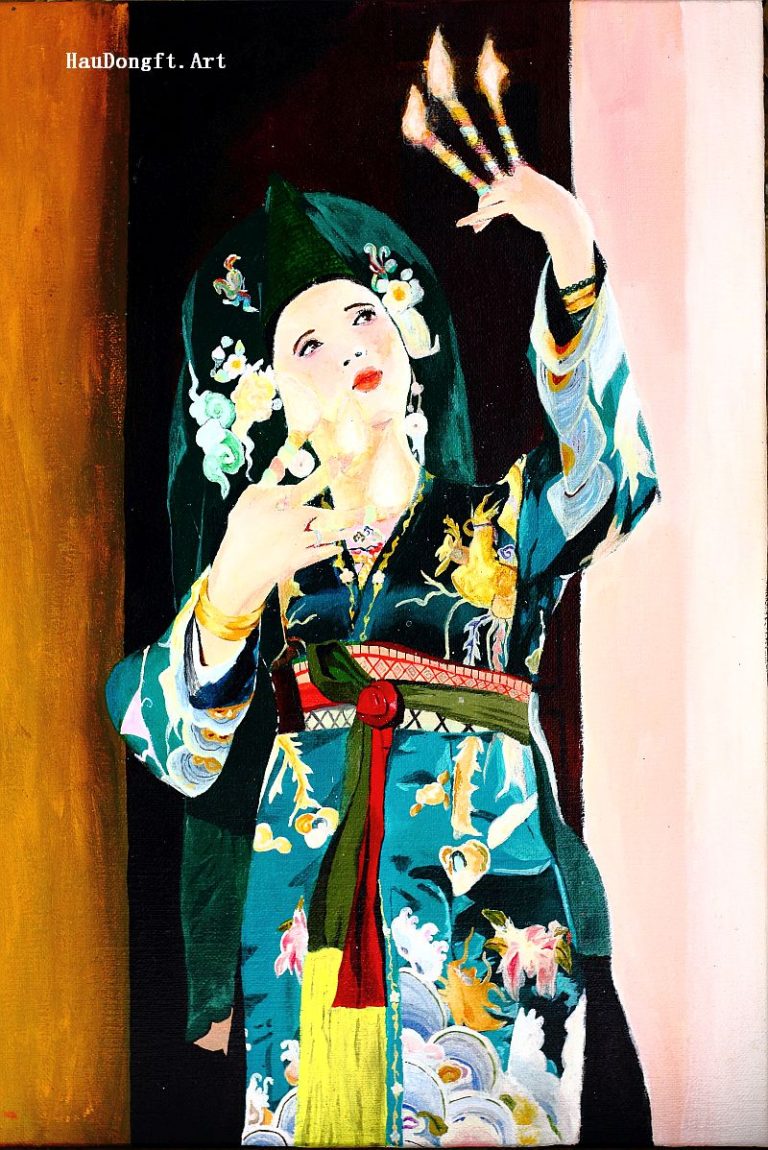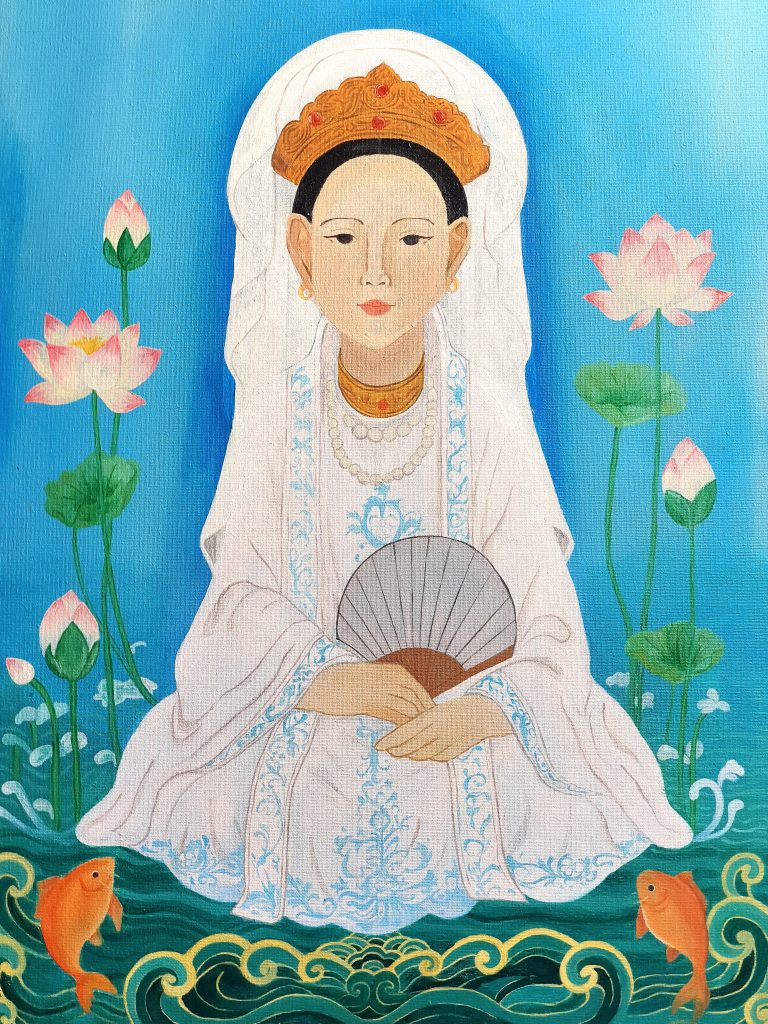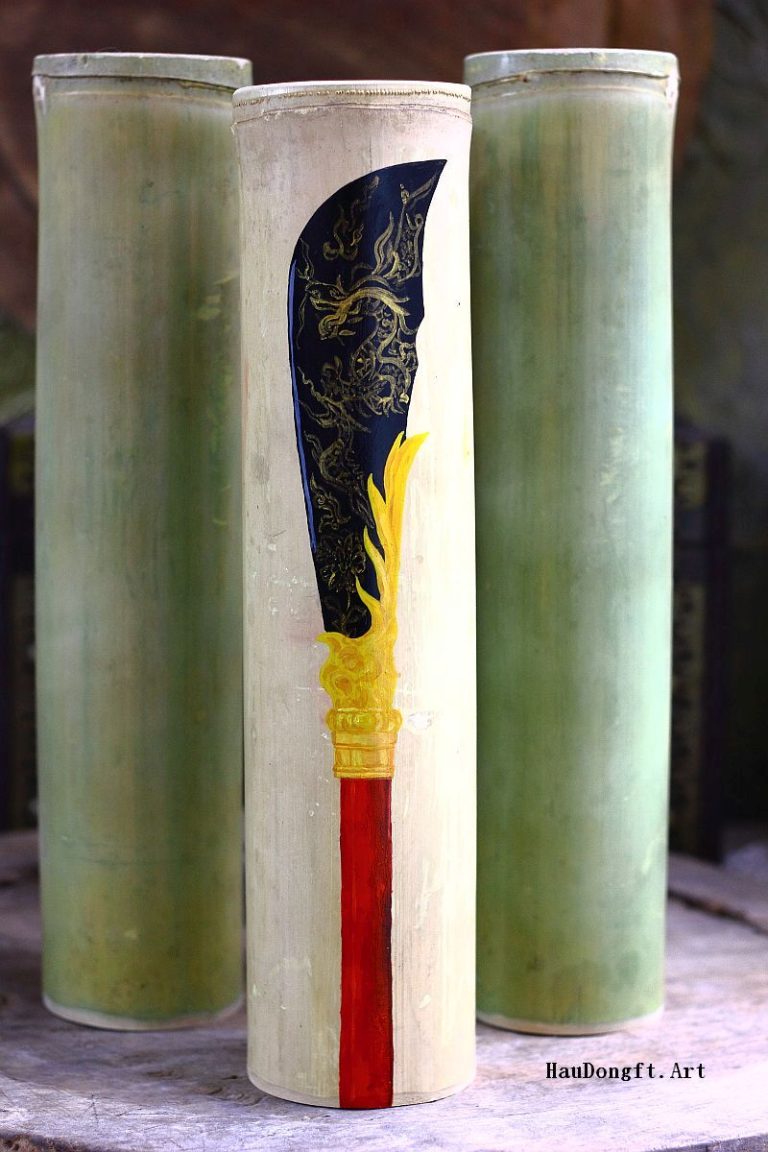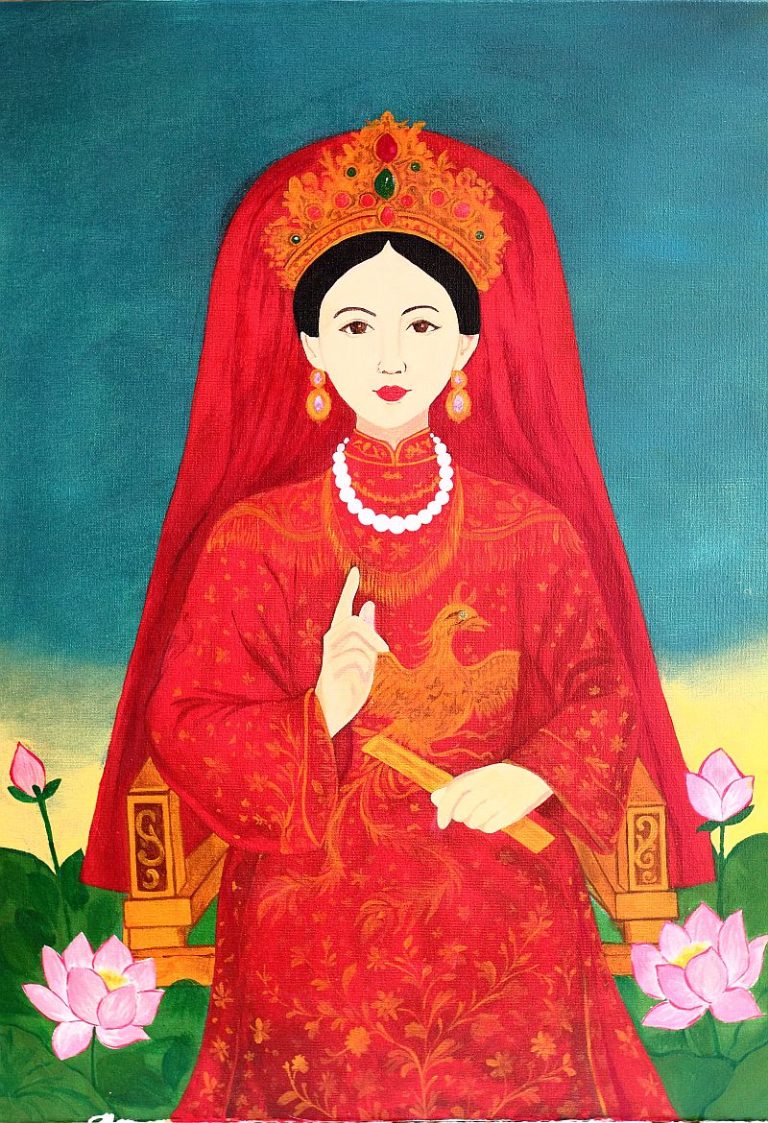Hát Chầu Văn (also known as Hát Văn or Hát Bóng) is a distinctive form of Vietnamese folk performance art intrinsically linked with the Mother Goddess Worship (Đạo Mẫu) of the Tam Phủ belief system. Having endured centuries of socio-historical upheavals, this art form has preserved both its vitality and unique aesthetic value within Vietnamese cultural life. In 2012, the Chầu Văn ritual was inscribed in the National Intangible Cultural Heritage List by the Ministry of Culture, Sports, and Tourism. Furthermore, it contributed significantly to the recognition of the “Practices of Mother Goddess Worship in Vietnam” as an Intangible Cultural Heritage of Humanity by UNESCO in 2016.
As a ritual performance, Hát Chầu Văn embodies a remarkable synthesis of music, spirituality, and belief. It functions not merely as an artistic expression but as a mediating force that facilitates communication between devotees (con nhang đệ tử) and the divine world. In this sense, Hát Văn represents an organic convergence of religious practice and musical tradition: music becomes an indispensable medium through which human beings establish dialogue with the sacred. Accordingly, to study the Mother Goddess belief system requires engagement with Hát Văn, and conversely, an inquiry into Hát Văn necessitates understanding the mythological corpus and hagiographies of the deities. Through its lyrical repertoire, listeners can discern the origins of deities, their sacred attributes, and the landscapes they inhabit, making Hát Văn integral to the ritual of spirit possession (hầu thánh).
A full performance of Hát Chầu Văn requires both a lead singer (cung văn) and an accompanying ensemble. The cung văn is expected to possess extensive knowledge of melodies, vocal versatility, and instrumental proficiency. The ritual ensemble (dàn nhạc hầu bóng) typically consists of the đàn nguyệt (moon lute), đàn nhị (two-string fiddle), a small drum (trống con), a pair of cymbals (cảnh), and wooden clappers (phách). Supplementary instruments such as large drums, gongs, flutes, and zithers may be incorporated depending on the context of the ritual. Among these, the đàn nguyệt, trống con, and cảnh đôi are indispensable, as they establish the unique sonic identity of Hát Văn.
The textual corpus of Hát Văn is primarily transmitted through oral tradition, employing classical Vietnamese poetic forms such as lục bát (6–8 verse), song thất lục bát (double seven-six-eight), heptasyllabic quatrains, and tetrasyllabic lines. These texts are characterized by refinement, conciseness, solemnity, and profound spiritual resonance. Their contents frequently recount the origins of the deities, celebrate their merits, and petition for blessings, while simultaneously referencing historical events, celebrated landscapes, and moral teachings.
An illustrative example is the repertoire dedicated to Ông Hoàng Bảy, a deity associated with the Water Palace (Nhạc Phủ). Oral tradition identifies him as Nguyễn Hoàng Bảy, a Lê dynasty mandarin tasked with defending the Lao Cai–Yên Bái region. Renowned for his strategic acumen, he secured national borders, pacified local populations, and, following his death, continued to manifest in divine form. Successive dynasties canonized him as a “Supreme Deity,” bestowing titles such as “Trấn An Hiển Liệt” and “Thần Vệ Quốc.” His văn texts simultaneously enshrine his cultic presence and transmit collective memory.
Structurally, Hát Văn compositions unfold as narrative sequences that trace the lineage of the deity while extolling their virtues and miraculous deeds. Although not always bound by strict poetic conventions, the sung texts acquire a distinct lyricality when performed. Since Hát Văn accompanies spirit possession rituals, the length, melodic contour, and intensity of performance are contingent upon the ritual’s progression. At times the music is fluid and melodious; at others, vigorous and exuberant. The texts themselves, imbued with poetic and humanistic sensibility, attain their highest expressive power within the ritual setting—where incense smoke, votive gestures, percussive rhythms, choral refrains, and sacred dance coalesce into an atmosphere of transcendence.
The ritual sequence of Hát Chầu Văn may be divided into four principal stages: (1) introductory invocations (văn thờ or văn công đồng) inviting the deities, usually at a brisk tempo; (2) narrative recitations recounting legends and merits, often shifting into hát dọc to elevate the medium’s ecstatic state; (3) dramatic embodiment of the deities, accompanied by intensified melodies and rhythmic variation; and (4) petitions for blessings and ritual closure, typically concluded with the formulaic line: “Thánh giá hồi cung!” (“The saint returns to the palace”).
The performance demands extraordinary agility from the cung văn, who must swiftly adapt lyrics, tonalities, and rhythms to align with the medium’s embodiment of different deities. Variations in form—such as phú dựng, phú chênh, or phú rầu—convey joy, solemnity, or sorrow respectively, with corresponding adjustments in pentatonic modes. Such flexibility exemplifies the artistry and improvisational capacity of the cung văn.
Over time, Hát Văn has developed a rich repertoire of rhythmic and melodic structures tailored to specific deities and ritual contexts. Its three principal melodic systems—Cờn, Dọc, and Xá—are supplemented by fourteen recognized modes (Bỉ, Miễu, Thổng, Phú Bình, Phú Chênh, Phú Nói, Phú Rầu, Đưa Thơ, Vãn, Dọc, Cờn, Hãm, Xá, and Dồn). Moreover, Hát Văn has assimilated stylistic elements from other traditional genres such as ca trù, quan họ, hò Huế, and minority folk songs, further diversifying its expressive range. Interludes of instrumental music (lưu không) punctuate the performance, heightening its ritual intensity.
With its emphasis on cyclical rhythms, Hát Văn resembles sacred dances—mesmerizing, enchanting, and evocative of the divine. The đàn nguyệt often assumes a guiding role, shaping melodic flow and supporting vocal delivery. Its lyrical, supple melodies frequently evoke feminine qualities associated with the Mother Goddess, embodying tenderness and grace within the Four Palaces pantheon.
From an aesthetic perspective, Hát Văn represents a pinnacle of Vietnamese religious music. Its musical sophistication and expressive breadth distinguish it from other folk traditions, often imbuing performances with a theatrical dimension. This allure has historically attracted practitioners and audiences alike, transforming Hát Văn into both a spiritual practice and an artistic spectacle. Unlike many religious systems that rely primarily on canonical scriptures, the Four Palaces tradition privileges music—particularly Hát Văn—as its central medium of transcendence and consolation. The distinctive integration of rhythm, melody, and poetry explains why Hát Văn occupies such an elevated position within Vietnam’s intangible heritage.
In contemporary society, as public interest in traditional performing arts continues to grow, Hát Chầu Văn has consolidated its cultural standing. Annual festivals organized by the Ministry of Culture, Sports, and Tourism, as well as provincial authorities, provide vital platforms for transmission and revitalization. Today, Hát Văn endures not only as a ritual practice but also as a vibrant art form, serving as both spiritual sustenance and cultural enrichment for the Vietnamese public.
Footnotes
1. Tam Phủ (Three Palaces): A Vietnamese indigenous belief system venerating deities associated with three realms—Heaven, Water, and Earth. Later expanded into Tứ Phủ (Four Palaces) with the addition of the Mountain domain.
2. Con nhang đệ tử: Devotees or spiritual disciples participating in Mother Goddess rituals.
3. Hầu thánh (spirit possession): A core ritual of Mother Goddess Worship in which a medium becomes possessed by various deities and enacts their personas.
4. Cung văn: Ritual singer-musician responsible for performing Hát Văn and leading the musical ensemble.
